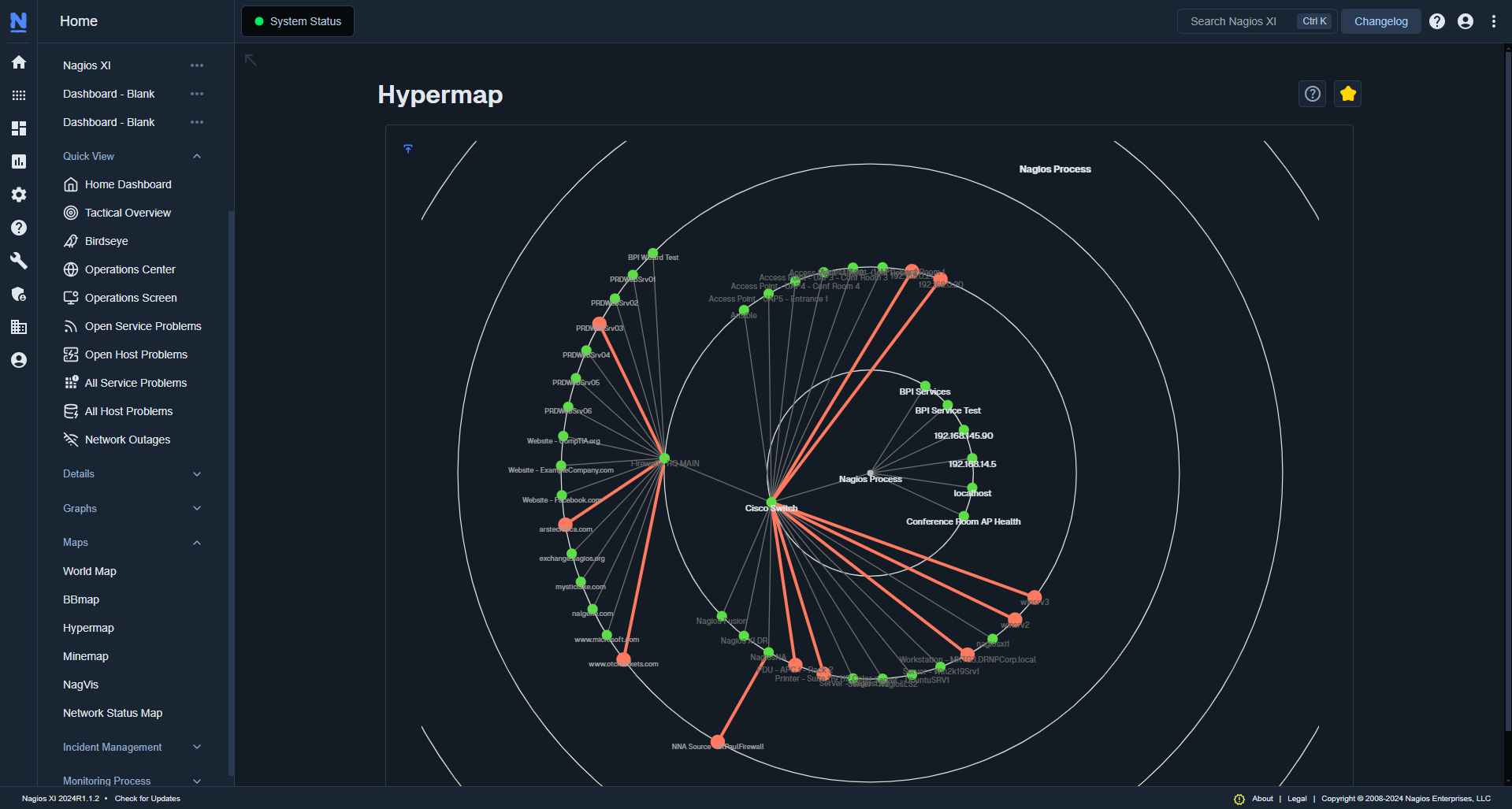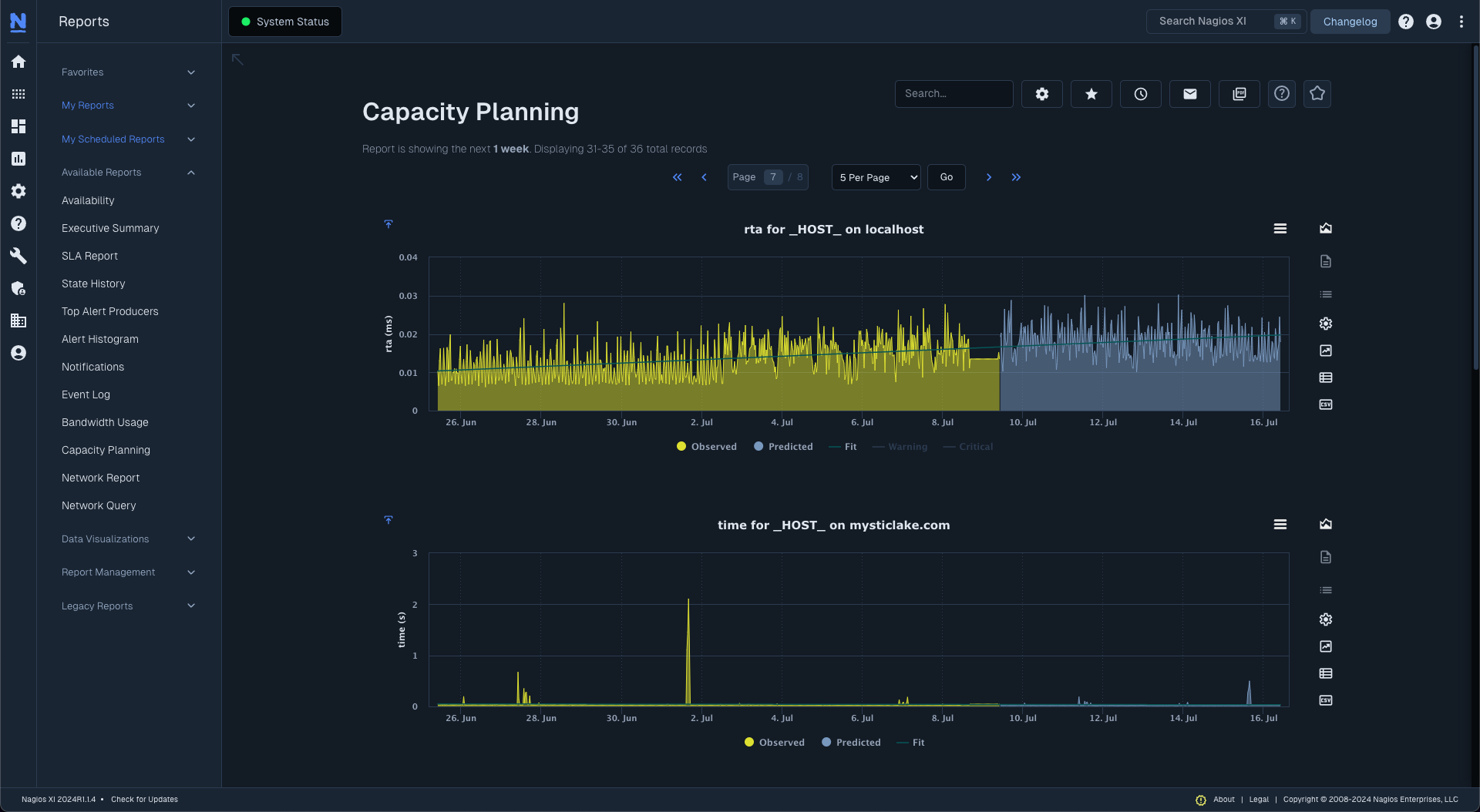
No matter the industry, company size, or company culture, it’s never a good thing when a server goes down. The best-case scenario is that it’s just a fire drill for the IT team, but, at worst, it’s a blame game that can be both costly and time consuming.
Watching the minutes and dollars tick by with no clear fix is an awful feeling for IT teams. Server monitoring software, like Nagios XI, is essential for alerting you when there are issues, helping you resolve said issues quickly, and giving you data so you can fend off downtime before it happens. In this article, we lay out a few specific ways that server monitoring software can help with reducing downtime.
Effective server monitoring shouldn’t be about whether a physical or cloud-based server is Up or Down. You’ll get a better sense of how the environment around the server is performing with server monitoring software that can monitor everything, from disk space to the air temperature in the server room.
To really get a clear view of the IT infrastructure around your servers, look for a monitoring solution that can monitor it all, like Nagios XI. XI can monitor just about anything that runs on electricity. It can tell you how much traffic your website is receiving, how individual workstations are operating, and more. If a server goes down, you’ll have a full map of your network’s status to pinpoint and fix any issues because you are able to monitor more than just the basics of your IT infrastructure.
As an example of how XI can be used to monitor more of an environment, Burlington (formerly Burlington Coat Factory) moved from using several home-grown monitoring systems, to monitoring its servers and entire network with Nagios. The company gained a better view of what was going on around the servers and could monitor multiple points of failure. Burlington administrators were then able to correct a single point of failure within the process before it became a total failure, resulting in a “marked” decrease in downtime.
Server monitoring software also helps you reduce downtime by allowing you to map out the relationships and dependencies on your network. With Host parent definitions, administrators can define a hierarchy of connectivity for monitored Hosts, which provides a better sense of what’s failing during downtime. For example, if the parent Host enters a Down state, it triggers XI’s Host reachability logic to automatically determine which child Host became inaccessible and flags it as Unreachable rather than Down. This logic allows notifications to only be sent for the parent Host and spares users from being bombarded by unnecessary notifications. After these relationships are set up in XI, you can view the relationships and their statuses graphically in the Hypermap or in the Network Status Map. Having these views helps save administrators time by allowing them to easily identify the problem at a glance.

Server monitoring software that offers capacity planning is a game changer when it comes to proactively preventing downtime. With capacity planning, the monitoring software “learns” key behaviors of your network, like the rate at which data is used.
Let’s say your hard drive gets X amount of data every day. The monitoring software will use that information to calculate that you will run out of space in X number of months if things continue as normal. At that point, the hard drive will start overwriting old data, and you’ll lose it forever. By alerting you before this threshold is reached, you can plan ahead and either move your data or purchase more space to fit your organization’s needs.
Capacity planning is available in the Enterprise Edition of XI. This feature generates graphs that enable you to visualize XI’s predictions of when a monitored device will need to be replaced or upgraded. You can also configure proactive alerts to have XI remind you about upgrading or replacing your hardware. As a result, you can avoid downtime due to your devices catching you by surprise.

Fixing minor issues before they bring down a server. Pinpointing the culprits of downtime faster. Ensuring you’re maximizing the use of your server monitoring software to get a clearer picture of your network. These benefits and more are what make having a server monitoring solution so important for reducing downtime and improving your organization’s bottom line. XI is useful for more than just server monitoring, though, so if you want to learn more about what this solution can do for you or your organization, download a free trial today.
Unexpected downtime could cost your company thousands of dollars if not fixed quickly. Want to find out how much downtime could cost you? Use our downtime calculator to get an estimate.
Things to know before getting started
Use this tool to calculate the hourly and total amount of labor lost when your organization experiences downtime. These estimates will help you understand how downtime could impact you, given the size of your organization, without a monitoring solution like Nagios XI. Avoid losing time and money by minimizing downtime with XI's proactive alerts and other time-saving features.
Employees Affected * % Productivity Lost = Hourly Cost
(Employees Affected * Hours of Downtime) * % Productivity Lost = Labor Lost
By what percent out of 100 does your productivity go down during downtime?
How many hours does the downtime last?
*This is a baseline estimation for licensing and should be used only as a guide. There are many variables not accounted for which can affect license level determination (e.g., active and passive checks, Service check interval, hardware capabilities, and more). It is encouraged to speak with a Nagios representative for an accurate assessment.
Feel free to reach out by emailing us at sales@nagios.com or calling us at 1-888-NAGIOS-1 (1-888-624-4671).
Nagios, the Nagios logo, and Nagios graphics are the servicemarks, trademarks, or registered trademarks owned by Nagios Enterprises. All other servicemarks and trademarks are the property of their respective owner. Website Copyright © 2009-2024 Nagios Enterprises, LLC. All rights reserved.